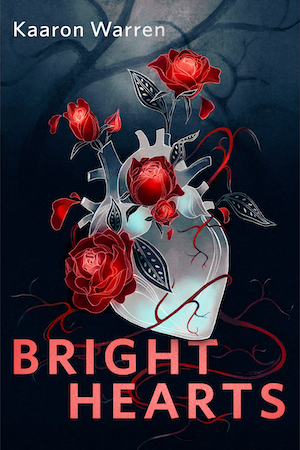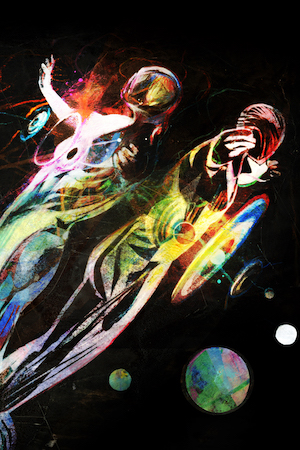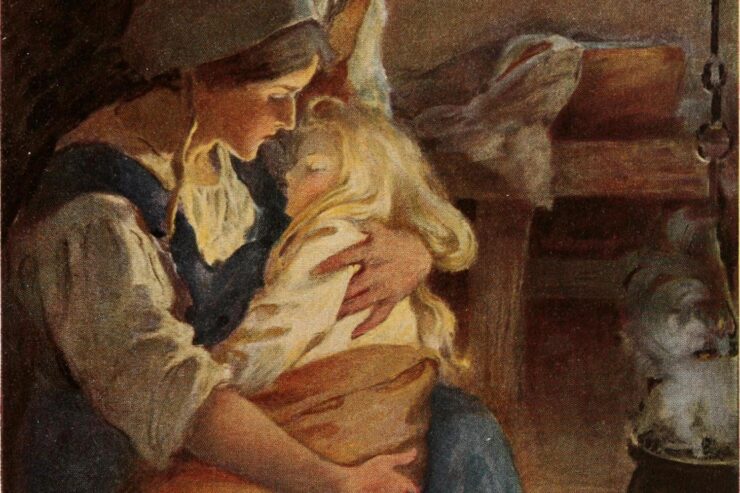In the winter of December 2019, I uttered aloud my wish for a child. I assumed my wish would form a path of light, passing obliquely from who I was to who I would become. To me, wish children held a sweet simplicity, like the birth of Tom Thumbe, the diminutive protagonist of Richard Johnson’s 17th century tale.
In the story, Tom’s mother yearns for a son “even if he is no bigger than a thumb.” Soon after, she gives birth. The Queen of Faeries attends her labor and when the tiny child emerges, he is gifted a hat made of folded oak leaves, a pair of stockings sewn from apple rinds, woven cobwebs for his shirt and a matching doublet of silken thistledown. His shoes are the soft, gray felt of a mouse’s skin.
The begetting of wish children may require nothing more than words spoken aloud, but I will tell you how such words emerge. Such a wish must be cultivated in the dark of one’s throat, fed on longing until its limbs turn supple with quiet violence and it fights its way out of the body’s hidden dusk.
In fairytales, yearning is a character too old and arthritic to do much more than limp to the end of the first sentence. You will recognize its shadow though. Yearning has an unmistakable accent no matter what language it speaks.
Once upon a time, a couple longed for a child.
Once upon a time, there lived a king and queen who had no children.
Once, once, once.
In the tale of Sneewittchen, more commonly known as “Snow White,” the story opens with a queen sitting by her window. She is sewing, but I can see the tremor in her fingertips. Already, she is thinking of what she should try next, how many more sleeps until her hand rests on something other than her hollow belly, how many more times she will wake and feel failure slicking the inside of her thighs. If she knew this would not be forever, then perhaps she could endure it.
When she pricks her finger, it is no accident. Pain anchors her in the present and for a moment, her shadow darkens and her outline sharpens, and she is vividly here instead of lost inside the endless corridor of one month’s cycle to the next.
I watch the queen lean out the windowsill of her castle, elbows settling into the familiar grooves in the cut stone. She is waiting, and I wait too. The queen watches a raven hop across the blood-flecked snow. I watch a red-tailed hawk whose feathers are the color of old blood. We both long for omens.
How I wish that I had a daughter, sighs the queen, and I sigh too, and our words transpose one atop the other. I wish for a daughter with lips as red as blood and hair as dark as a raven’s wing and a heart as pure as the snow is white.
Hidden in the wish is a sacrifice. The queen’s words come true. I wonder if she finds any comfort in this as she bleeds out on the birthing bed.
What my wish would take from me, I had no way of knowing.
That December, I thought of windowsills and wings and wishes. I dreamt of snow, but winters in Georgia are sloppy and humid. On occasion, the season remembers itself and cold strangles the air, but that year, no snow sugared the ground. If there were any ravens that December, they never came to me. Perhaps I should have seen that as a warning, but I did not know how to look.
I approached that first night with the precision of an alchemist. For months, I swallowed golden pills that flooded my mouth with the taste of algae. I urinated in paper cups. I took my temperature, recording numbers in neat rows. I became a connoisseur of the saturated blue line of an ovulation strip.
There is a picture in my phone of that day. The time on the photo says 4:54 p.m., our effort slotted awkwardly between family obligations, holiday meals, the wrapping and unwrapping of gifts, Christmas music looping through the rooms. The timing seemed funny, so we took a photo. In it, my husband grins and I screw up my face and we look like a prologue. I am wearing a faded tee and joggers. Behind us looms his festooned bed of gold and sable velvet, quilted pillows with crystal beading, our initials made thick with silver embroidery. The bedding, purchased by his mother after our wedding, is so rich I sometimes feel embarrassed to sleep on it. Tonight, it feels like a stage. Surrounding us are the paraphernalia of the years we have known one another. In the closet are MCAT practice tests, a painting I made for him when we were sixteen, our wedding clothes entombed in plastic. Wedged between the nightstand and the wall, a framed photo of my husband as a beardless teenager smirks.
On the bed, we move as if we are made of glass. This hope between us is startlingly delicate and we are careful not to break it. When I stand, I put my hands to my belly where the wish settles into my body and begins to grow.
In February, I watch a herd of elk paw at a crust of ice until they reach the dried sedge grass beneath the snow. Behind the elk, the Teton Range looks like a great jaw, the sky clamped between the mountains’ teeth and celestial incisors too far away for me to see. The guide tells us that the mountains earned their name from French-Canadian trappers who thought they resembled towering nipples. Les trois tétons.
I wonder if this makes the snow the milk of the mountains.
I would share this observation with my husband, but we are both so cold we cannot speak. The trees in the National Elk Refuge do not shield us from the February winds, and I have dressed for vanity more than practicality. I am so cold that my toes burn and I would crouch at the bottom of the wagon pulling us across the plains if I wasn’t so entranced by the nearness of the animals. If I leaned out far enough, I could touch the velvet nap of antlers, the shaggy ruff of their necks.
At first glance, the plains are a blank page, but I read life in the space between paw prints, the angle of shadows, the hieroglyphs of animal gore and frozen scat. Though hidden for now, this is a place where grizzlies lope, mule deer graze, bighorn sheep amble, coyotes pant, trumpeter swans fly, red foxes stalk, magpies sing and blackbirds soar. Later, I will discover that more than half of the females in the elk herd are pregnant from autumn’s golden rutting. I wonder if the female elk already knew, whether they had felt the quickening of hooves and marveled at the ripple of movement beneath their fur. Later, I will put my hand on my belly and smile, certain that life is happening unseen, certain that what seems like silence is the beginning of a green symphony conducted just out of earshot.
On the bus ride back to our hotel, I feel twinges. Cramps. The Internet is shaky, but I scroll through forums, finding confirmation in dozens of posts with titles like “Got my BFP!!!” and “Thought They Were Period Cramps and Was Very Very Very Wrong :-).” I dream of ways to tell my husband my suspicions even though it’s too early for a positive test.
Back in our hotel room, our window is a rectangle of blue dusk. As the snow falls in thick frosting-like dollops, my gaze catches on a curiously molded hillock. I can’t tell what’s underneath it. A vase, perhaps, but the way the snow has fallen conjures the shape of a bundled-up toddler. When my husband asks what’s on my mind, I don’t tell him about the curious twinges. I tell him, instead, about Snegurka, the Snow Maiden.
Once, there lived a kindly man and woman named Ivan and Marya. Though they had prayed and prayed, they had no child to comfort them in their old age. One winter, they make a child out of snow. They imagine how she would have had Marya’s flaxen hair and Ivan’s aversion to plums. They pretend they are a family and, for a moment, they both forget the cold. When Ivan and Marya prepare to return home, the snow child trembles and shakes off the snow, revealing a little girl with frost blue eyes and silver hair. She falls into their arms and though she is freezing to the touch, Ivan and Marya have never been so warm in their life. Snegurka grows by the hour and soon becomes a beautiful young woman.
The ending of the tale varies. In some, Snegurka is coaxed into a game where she must leap over a small fire but when her turn to jump over the flames comes, she evaporates into a small cloud. This was the version captured by Alexander Afanasyev in his 1869 volume titled The Poetic Outlook on Nature by the Slavs. Andrew Lang wrote a similar version called “Snowflake” in his 1897 collection The Pink Fairy Book. But in Nikolai Rimsky-Korsakov’s opera of The Snow Maiden: A Spring Fairytale, love proves to be the Snow Maiden’s doom. Determined to know human emotion, the Snow Maiden begs for fire in her heart of ice. Springtime takes pity on her and grants her wish, though it is not without warning. In the moment before she can embrace her beloved, Snegurka melts. Her lover, distraught, drowns himself. I’m supposed to feel the most pain for the Snow Maiden and her dead lover, but it’s the parents who have my sympathy.
So often, the tale skids to a halt when the Snow Maiden unravels, leaving us to envision Marya and Ivan wandering into the woods and calling out for their daughter. They are given no reason for her life and no answer for her death. For years, I found this unthinkably sad before the story’s cold crust yielded something else beneath it.
When their bodies deny them a child, Marya and Ivan weave parenthood out of the elements. In the cold-choked ground where life cannot take root, they kneel and their hands sculpt joy. It is not a child they make, but a choice. And though I’m sure they mourned their pain, I am certain they never regretted their path.
In a few days, my cramps will sharpen and I will wake up to blood. I imagine my body is an expanse of snow. There are times I wish it would smother the wish growing inside me, but it thrives anyway.
Months collapsed into years. Tests are run and there is no answer for this emptiness. All the while, the body—by this point, it has ceased to feel like mine—is rummaged through. For a month straight, my husband wakes at 4 a.m. to inject me with a cocktail of IVF hormones and my belly turns mottled and distended. In one of the endless chains of waiting rooms, I come across a video of a man who looks like a melted candle claiming that there is only one way to conceive a child. That all else is unnatural. That all else is a mockery of divinity, of history.
When the nurses roll me into the operating room for the egg retrieval, I am thinking of the tale of Kadru and Vinata. Both longed for children and so their husband, the great sage Kashyapa, granted them a boon. In time, Kadru laid two eggs and Vinata, a thousand. In the Amar Chitra Katha comics I obsessively read growing up, there is a panel where the two women admire their clutch of eggs in a palatial room. One of Kadru’s eggs eventually hatched into Garuda, the divine eagle and mount of Lord Vishnu. Not once does he question his provenance. Perhaps, for divinity, such questions are immaterial. They were wanted, and, so summoned by that want, the universe bent to bring them to life.
When my daughter eventually asks where children come from, I know what I will tell her. Perhaps I’ll also tell her the details of a wish held so long it hatched. I might show her the earliest known photo of her, little more than a cluster of cells. But my answer will be no different from the answers of a thousand thousand mothers before me. Love, my little one. You came from love.










